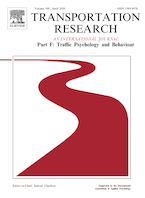Cross-culturally approaching the cycling behaviour questionnaire (CBQ): Evidence from 19 countries
- Autores: Sergio Useche, Francisco Alonso, Aleksey Boyko, Polina Buyvol, Isaac Castañeda, Boris Cendales, et all. (2022).
- Tipos de publicación: Article
- Título Publicación (nombre del libro o revista): Transportation Research Part F. Num.91:386-400
-
Resumen:
Given different advances in applied literature, risky and positive behaviours keep gaining ground as key contributors for riding safety outcomes. In this regard, the Cycling Behaviour Questionnaire (CBQ) represents one of the tools available to assess the core dimensions of cycling behaviour and their relationship with road safety outcomes from a behavioural perspective. Nevertheless, it has never been psychometrically approached through a cross-cultural perspective. Therefore, this study aimed to perform the cross-cultural validation of the CBQ, examining its psychometric properties, reliability indexes, validity insights and descriptive scores in 19 countries distributed across five regions: Europe, America, Asia, Africa, and Oceania. For this purpose, it was used the data retrieved from a full sample of 7,001 urban cyclists responding to a large-scale electronic survey. Participants had a mean age of M = 36.15 (SD = 14.71), ranging between 16 and 83 years. The results of this large-scale study empirically support the assumption that the 29-item version of the CBQ has a fair dimensional structure and item composition, good internal consistency, reliability indexes, and an interesting set of validity insights. Among these results, there can be highlighted that: (i) Structurally speaking, the questionnaire works better under a three-factor dimensionality, keeping all its 29 items, whose factor loadings are >0.400 in all cases; (ii) The CBQ shows greater reliability indexes than in previous applications using smaller samples, with good Cronbach’s alphas [0.768 - 0.915], McDonald’s omegas [0.770 - 0.913] and Composite Reliability Indexes [981 - 0.994]; and (iii) Robust tests comparing riding behaviours of riders with different levels of risk perception and crash involvement support the concurrent validity of the Cycling Behaviour Questionnaire. These outcomes endorse the usefulness of the CBQ to assess both risky and positive riding behaviours of cyclists in different countries, contributing to assess and improve cycling safety from the human factors approach.
DOI: 10.1016/j.trf.2022.10.025ISSN: 1873-5517










